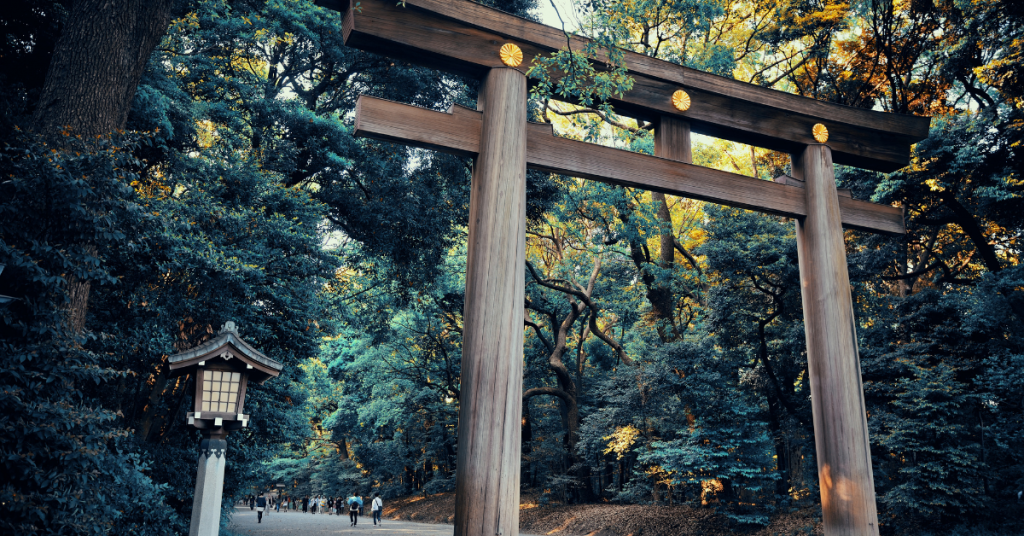Hey there, fellow Tokyo explorers! 🚆 Ready to discover the spiritual side of Tokyo while riding the city’s most famous train line? Whether you’re a curious tourist or a local looking to deepen your cultural understanding, this guide will help you navigate the beautiful temples and shrines along the Yamanote Line with confidence and respect.

What You’ll Learn in This Guide
- The key differences between temples and shrines
- Essential etiquette tips for sacred site visits
- Must-visit temples and shrines along the Yamanote Line
- Practical navigation tips and suggested itineraries
- Local insights and cultural dos and don’ts
Temples vs. Shrines: What’s the Scoop?
First things first – let’s clear up the temple-shrine confusion! While both are gorgeous spiritual spots, they serve different purposes. Think of temples (tera) as Buddhist hangouts, complete with Buddha statues and peaceful meditation spaces. Shrines (jinja), on the other hand, are Shinto spaces where nature spirits (kami) are honored. Pretty neat, right?
Your Essential Etiquette Cheat Sheet
The Basics (For Both Temples and Shrines)
- Dress code: Keep it modest! Those shoulders and knees should be covered. Think “meeting your partner’s grandparents” level of proper.
- Inside voice, please: These are places of reflection, so let’s keep the volume down.
- Photo policy: Always check for “no photo” signs before snapping that perfect Instagram shot.
Shrine Special Rules
Want to nail that shrine visit? Here’s your step-by-step guide to proper shrine etiquette:
- Purification ritual at the temizuya (water basin):
- Right hand: Scoop water
- Left hand: Get cleaned
- Switch and repeat
- Quick mouth rinse (discretely!)
- The prayer sequence:
- Two bows
- Two claps
- One final bow Pro tip: Think “bow-bow-clap-clap-bow” and you’re golden!
Temple Etiquette
At Buddhist temples, things are a bit different. Check out these detailed temple guidelines for the full scoop, but here are the basics:
- Enter with a slight bow (showing respect never hurts!)
- Follow the signs for prayer areas
- If there’s incense, feel free to light some for contemplation
Must-Visit Spots Along the Yamanote Line
Meiji Shrine (Harajuku Station)
The crown jewel of Tokyo shrines! Surrounded by a peaceful forest, it’s hard to believe you’re still in the city. Keep an eye out for traditional weddings on weekends – they’re absolutely stunning!
Sensō-ji Temple (Nearby Ueno Station)
Tokyo’s oldest temple is always buzzing with energy. Don’t miss trying your luck with omikuji (fortune papers). Just remember – if you get a bad fortune, tie it up at the temple to leave that bad luck behind!
Zōjō-ji Temple (Hamamatsuchō Station)
This one’s got the best of both worlds – ancient architecture with Tokyo Tower as a backdrop. Perfect for those “old meets new” photos!
Pro Tips for Your Temple Journey
- Timing is everything: Early morning visits mean fewer crowds and better photos.
- Get a Suica card: Trust me, it’s way easier than buying individual tickets.
- Check festival dates: Visiting during a matsuri (festival) adds extra excitement to your temple trip!
Your Perfect Temple-Hopping Itinerary
Half-Day Adventure
- Start: Meiji Shrine (peaceful morning vibes)
- Mid-point: Sensō-ji (lunch at Asakusa)
- Finish: Zōjō-ji (sunset with Tokyo Tower)
Wrapping Up
There you have it, friends – your complete guide to exploring Tokyo’s spiritual spots along the Yamanote Line! Remember, these aren’t just tourist attractions; they’re living, breathing parts of Japanese culture. Approach them with respect, curiosity, and an open heart, and you’ll have an amazing experience.
